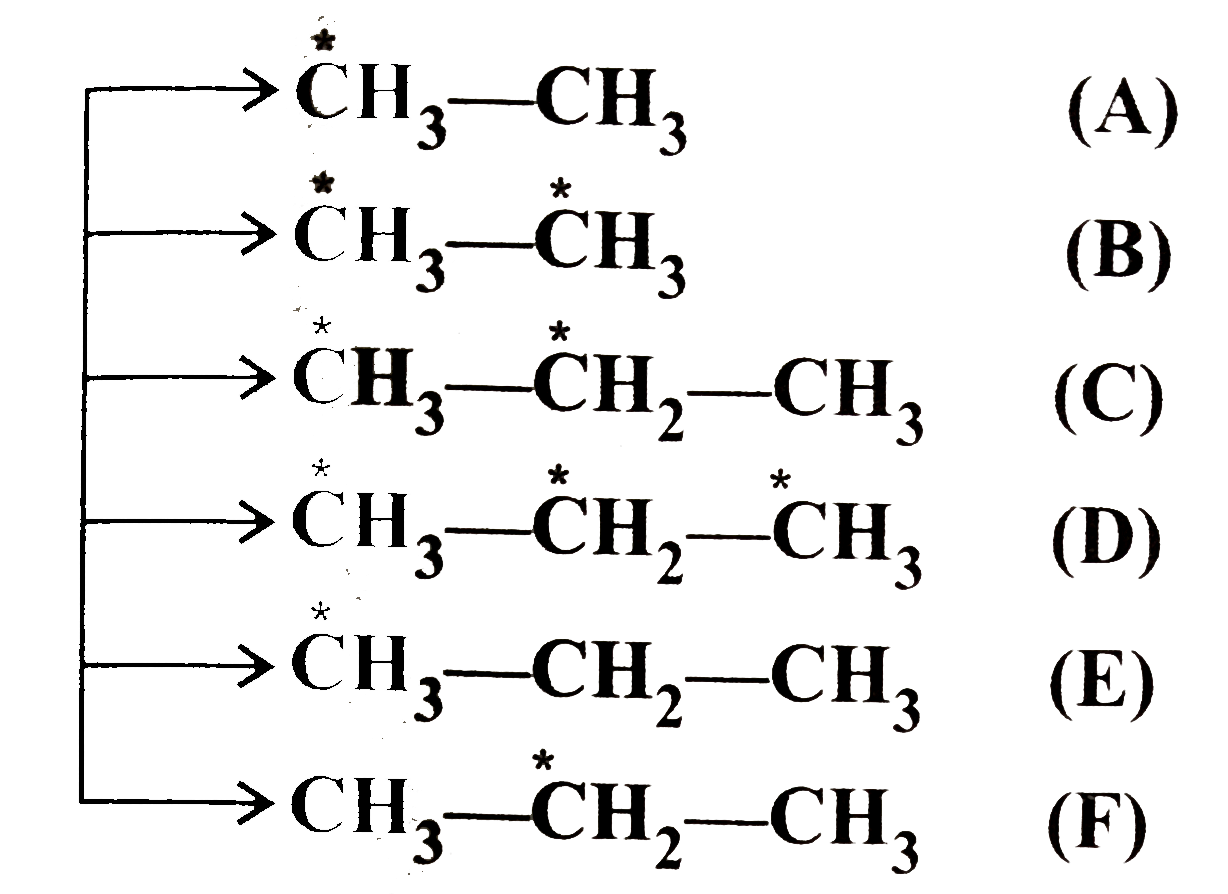Which of the following is the correct method for synthesising methyl-t-butyl ether and why ?
i. (CH3)3CBr+NaOMe→
ii. CH3Br+NaO−t−Bu→
To determine the correct method for synthesizing methyl-t-butyl ether, we need to analyze both methods provided in the question.
1. Identify the Reactants in Each Method:
- Method i: (CH₃)₃CBr+NaOMe
- Here, (CH₃)₃CBr is a tertiary alkyl halide (tert-butyl bromide) and NaOMe is sodium methoxide.
- Method ii: CH₃Br+NaO−t−Bu
- In this case, CH₃Br is a primary alkyl halide (methyl bromide) and NaO−t−Bu is sodium tert-butoxide.
2. Understanding the Mechanism:
- The synthesis of ethers from alkyl halides and alkoxides typically follows the Williamson ether synthesis mechanism, which proceeds via an SN2 pathway.
- In an SN2 reaction, the reactivity order of alkyl halides is: primary > secondary > tertiary. This means that primary alkyl halides react more favorably in SN2 reactions compared to secondary and tertiary alkyl halides.
3. Analyzing Method i:
- In Method i, the tertiary alkyl halide (CH₃)₃CBr is being treated with sodium methoxide.
- Tertiary alkyl halides do not undergo SN2 reactions effectively due to steric hindrance. Instead, they tend to undergo elimination reactions (E2) when treated with strong bases like sodium methoxide.
- Therefore, this method is likely to produce alkenes (specifically 2-methylpropene) rather than the desired ether.
4. Analyzing Method ii:
- In Method ii, the primary alkyl halide CH₃Br is treated with sodium tert-butoxide.
- Since CH₃Br is a primary alkyl halide, it can effectively undergo an SN2 reaction with the sodium tert-butoxide, which acts as a strong nucleophile.
- This reaction will yield methyl-t-butyl ether as the product.
5. Conclusion:
- Based on the analysis, Method ii (CH₃Br+NaO−t−Bu) is the correct method for synthesizing methyl-t-butyl ether because it utilizes a primary alkyl halide that can undergo the SN2 mechanism efficiently.
Final Answer:
The correct method for synthesizing methyl-t-butyl ether is Method ii: CH₃Br+NaO−t−Bu, because it allows for an SN2 reaction to occur, leading to the formation of the desired ether.
- Method i: (CH₃)₃CBr+NaOMe
- Here, (CH₃)₃CBr is a tertiary alkyl halide (tert-butyl bromide) and NaOMe is sodium methoxide.
- Method ii: CH₃Br+NaO−t−Bu
- In this case, CH₃Br is a primary alkyl halide (methyl bromide) and NaO−t−Bu is sodium tert-butoxide.
- The synthesis of ethers from alkyl halides and alkoxides typically follows the Williamson ether synthesis mechanism, which proceeds via an SN2 pathway.
- In an SN2 reaction, the reactivity order of alkyl halides is: primary > secondary > tertiary. This means that primary alkyl halides react more favorably in SN2 reactions compared to secondary and tertiary alkyl halides.
- In Method i, the tertiary alkyl halide (CH₃)₃CBr is being treated with sodium methoxide.
- Tertiary alkyl halides do not undergo SN2 reactions effectively due to steric hindrance. Instead, they tend to undergo elimination reactions (E2) when treated with strong bases like sodium methoxide.
- Therefore, this method is likely to produce alkenes (specifically 2-methylpropene) rather than the desired ether.
- In Method ii, the primary alkyl halide CH₃Br is treated with sodium tert-butoxide.
- Since CH₃Br is a primary alkyl halide, it can effectively undergo an SN2 reaction with the sodium tert-butoxide, which acts as a strong nucleophile.
- This reaction will yield methyl-t-butyl ether as the product.
- Based on the analysis, Method ii (CH₃Br+NaO−t−Bu) is the correct method for synthesizing methyl-t-butyl ether because it utilizes a primary alkyl halide that can undergo the SN2 mechanism efficiently.
The correct method for synthesizing methyl-t-butyl ether is Method ii: CH₃Br+NaO−t−Bu, because it allows for an SN2 reaction to occur, leading to the formation of the desired ether.
Similar Questions
Knowledge Check
Rank the transition states that occur during the following reaction steps in order of increasing stability (least → most stable) :
1. H3C−+OH2→CH+3+H2O
2. (CH3)3C−+CH2→(CH3)3C++H2O
3. (CH3)2CH−+OH2→(CH3)2CH++H2OA1<2<3B2<3<1C1<3<2D2<1<3
Complete the following :
(CH3)3CBr+alc.KOH→[A]HOCI−−−→[B]
View SolutionWhich alkyl halide from the following pair is (i) Chiral and (ii) undergoes SN1 reaction faster ?
(a) (CH3)3CBr
(b) CH3CH2CHBrCH3
View SolutionFollowing reaction:
(CH3)3C−Br+H2O→(CH3)3C−OH+HBr is an example of -
View SolutionSynthesise the following compounds starting with CH3I.

View SolutionThe following is not an appropriate reaction for the preparation of t-butyl ethyl ether.
C2H5ONa+CH3−CH3| C| CH3−Cl→CH3CH3| C| CH3−OC2H5
(i) What would be the major product of this reaction ?
(ii) Write a suitable reaction for the preparation of t-butylethyl ether.
View SolutionWhich of the following reactions will yield propan-2-ol ? Select the right answer from (a), (b), (c) and (d)
I. CH2=CH−CH3+H2OH+−−→
II. CH3−CHOCH3MgI/H2O−−−−−−−−→
III. CH2OC2H5MgI−−−−−−−−→H2O
IV. CH2=CH−CH3Neutral KMnO4−−−−−−−−−−→
View SolutionArrange the following compounds in the increasing order of their property as indicated:
i. Acetaldehyde, acetone, di-tert-butyl ketone, methyl tert-butyl ketone (reactivity towards HCN).
ii. CH3CH2CH(Br)COOH,CH3CH(Br)CH2COOH,(CH3)2CHCOOH,CH3CH2CH2COOH (acidic strength).
iii. Benzoic acid, 4-nitrobenzoic acid, 3,4-dinitro-benzoic acid, 4-methoxybenzoic acid (acidic strength).
View Solution